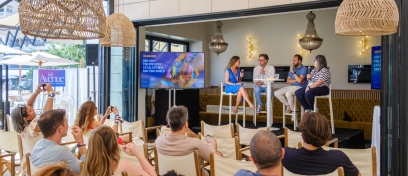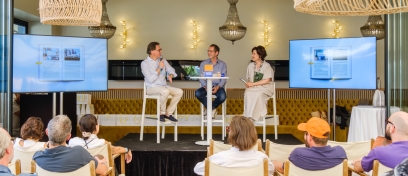For brands
Smart Furniture: What it Means for Brands and Audiences
Typical smart furniture features might include connected furniture, data integration and Dynamic messaging, interactive screens or enhanced imaging and augmented reality. Does smarter OOH mean smarter brand campaigns? Of course, different brands and product categories have different marketing objectives, which means that they use OOH differently. Let’s have a look at how three major product categories use smart OOH to optimise their campaign effectiveness.
Lately, fragrance advertisers have been using smart furniture to make their campaigns go a step further – moving from a brand awareness and brand building directly to drive-to-store. New mobile connectivity solutions give brands the possibility to link more personally to their consumers, relaying the ad between OOH and mobile.
Smart furniture can transform an OOH campaign into a virtual store. For example, interactive screens provide new possibilities for displaying products where consumers can try different product combinations. Alternatively, they can even try items on through augmented reality solutions. Going a step further, connected panels allow advertisers to directly drive sales by incorporating e-commerce into their DOOH campaigns. Michael Kors allows travellers to browse the collection and find more content via QR and Facebook integration. JCDecaux Hong Kong.
Michael Kors allows travellers to browse the collection and find more content via QR and Facebook integration. JCDecaux Hong Kong.
 Samsung Note8 is big and bold, and so is this domination campaign in Waterloo featuring a giant digital wall and a chance to experience the device and VR and photo editing on the spot | JCDecaux UK
Samsung Note8 is big and bold, and so is this domination campaign in Waterloo featuring a giant digital wall and a chance to experience the device and VR and photo editing on the spot | JCDecaux UK
Fragrance and Cosmetics: Mobile and Drive-to-Store
OOH Goals:
- Product sampling and product experience
- Drive-to-Store
Lately, fragrance advertisers have been using smart furniture to make their campaigns go a step further – moving from a brand awareness and brand building directly to drive-to-store. New mobile connectivity solutions give brands the possibility to link more personally to their consumers, relaying the ad between OOH and mobile.
Fashion: Interactive Screens and Virtual Stores
OOH Goals:
- Awareness of new collections, brand fame
- Simplify the purchase process
Smart furniture can transform an OOH campaign into a virtual store. For example, interactive screens provide new possibilities for displaying products where consumers can try different product combinations. Alternatively, they can even try items on through augmented reality solutions. Going a step further, connected panels allow advertisers to directly drive sales by incorporating e-commerce into their DOOH campaigns.

Tech: Smart Technology Delivers Smart Messaging
OOH Goals:
- Educate about product features
- Highlight innovative solutions







